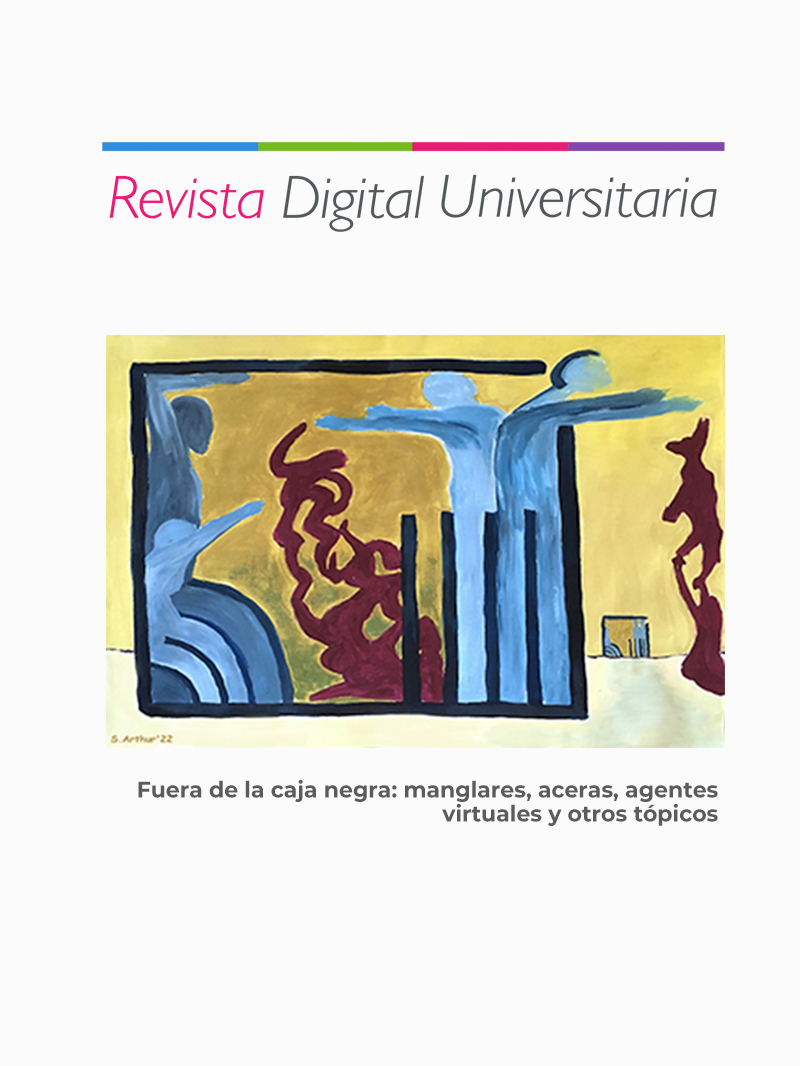Dormir bien o dormir con apnea obstructiva del sueño
DOI:
https://doi.org/10.22201/ceide.16076079e.2024.25.5.3Palabras clave:
sueño, apnea, ronquido, obstrucción, poligrafíaResumen
Los seres humanos realizamos gran cantidad de actividades, que hacen necesario tanto la ingesta de alimentos como el descansar, para poder recuperar la energía y estar listos para un nuevo día. La mejor forma de descansar es durmiendo. Estudios nos han permitido saber que el sueño es primordial para el buen funcionamiento del cuerpo y del cerebro, por lo cual es sumamente importante dormir, y no sólo dormir sino dormir bien. Un buen sueño se basa en el número de horas que dormimos y su calidad. Para lograrlo debemos tener buenos hábitos, que incluyen: un horario regular para dormir, evitar la ingesta de cafeína o alimentos pesados, realizar ejercicio, entre otros. Actualmente conocemos varios trastornos del sueño que obstaculizan un buen dormir, uno de los más prevalentes en la población mexicana es el síndrome de apnea obstructiva del sueño, en el que las vías respiratorias superiores se obstruyen mientras dormimos, produciendo una reducción o detención del flujo de aire. Si detectamos está enfermedad podemos tratarla y recuperar un buen sueño, para alcanzar una buena calidad de vida.
Citas
Alzahrani, M. M., Alghamdi, A. A., Alghamdi, S. A., y Alotaibi, R. K. (2022). Knowledge and Attitude of Dentists Towards Obstructive Sleep Apnea. International Dental Journal, 72(3), 315-321. https://doi.org/10.1016/j.identj.2021.05.004
Chaput, J. P., McHill, A. W., Cox, R. C., Broussard, J. L., Dutil, C., da Costa, B. G. G., Sampasa-Kanyinga, H., Wright, K. P. (2022). The role of insufficient sleep and circadian misalignment in obesity. Nature Reviews Endocrinology, 19(2), 82-97. https://doi.org/10.1038/s41574-022-00747-7
Chung, F. (2008). stop questionnarie: a tool to screen patients for obstructive sleep apnea. https://www.fundaciontorax.org.ar/calc/sas/stop_bang.htm
Dijk, D. J., y Landolt, H. P. (2019). Sleep Physiology, Circadian Rhythms, Waking Performance and the Development of Sleep-Wake Therapeutics. En M. C. Michel (Ed.), Handbook of Experimental Pharmacology (pp. 441481). https://doi.org/10.1007/164_2019_243
Foster, R. G. (2020). Sleep, circadian rhythms and health. Interface Focus, 10(3). https://doi.org/10.1098/rsfs.2019.0098
Gossard, T. R., Trotti, L. M., Videnovic, A., y St Louis, E. K. (2021). Restless Legs Syndrome: Contemporary Diagnosis and Treatment. Neurotherapeutics, 18, 140-155. https://doi.org/10.1007/s13311-021-01019-4
Granados Gurola, A. (2018, 16 de marzo). Los 10 mandamientos de la higiene del sueño para adultos (por la World Sleep Society). https://tinyurl.com/usx8kdyw
Guerrero-Zúñiga, S., Gaona-Pineda, E., Cuevas-Nasu, L., Torre-Bouscoulet, L., Reyes-Zúñiga, M., Shamah-Levy, T., y Pérez-Padilla, R. (2018). Prevalencia de síntomas de sueño y riesgo de apnea obstructiva del sueño en México. Salud Pública de México, 60(3), 347–355. https://tinyurl.com/4nmzdmwn
Hooper, R. G. (2020). cpap Therapeutic Options for Obstructive Sleep Apnea. Pragmatic and Observational Research, 11, 67-76. https://doi.org/10.2147/por.s258632
Krueger, J. M., Frank, M. G., Wisor, J. P., y Roy, S. (2016). Sleep function: Toward elucidating an enigma. Sleep Medicine Reviews, 28, 46-54. https://doi.org/10.1016/j.smrv.2015.08.005
Lane, J. M., Qian, J., Mignot, E., Redline, S., Scheer, F. A. J. L., y Saxena, R. (2022). Genetics of circadian rhythms and sleep in human health and disease. Nature Reviews Genetics, 24, 4-20. https://doi.org/10.1038/s41576-022-00519-z
Lévy, P., Kohler, M., McNicholas, W. T., Barbé, F., McEvoy, R. D., Somers, V. K., Lavie, L., y Pépin, J. L. (2015). Obstructive sleep apnoea syndrome. Nature Reviews Disease Primers, 1, 15015. https://doi.org/10.1038/nrdp.2015.15
Li, J., Vitiello, M. V., y Gooneratne, N. S. (2017). Sleep in Normal Aging. Sleep Medicine Clinics, 13(1), 1-11. https://doi.org/10.1016/j.jsmc.2017.09.001
Mason, G. M., Lokhandwala, S., Riggins, T., Spencer, R. M. C., Sciences, B., y Program, B. (2021). Sleep and human cognitive development. Sleep Medicine Reviews, 57, 101472. https://doi.org/10.1016/j.smrv.2021.101472
Nogueira, F., Borsini, E., Cambursano, H., Smurra, M., Dibur, E., Franceschini, C., Pérez-Chada, D., Larrateguy, L., y Nigro, C. (2019). Guías prácticas de diagnóstico y tratamiento del síndrome de apneas e hipopneas obstructivas del sueño: Actualización 2019: Sección Sueño, Oxigenoterapia y Tratamientos Crónicos Domiciliarios. Asociación Argentina de Medicina Respiratoria. Revista americana de medicina respiratoria, 19(1), 59-90. https://tinyurl.com/47truz8d
Nucleus Health Videos – Español (2020, 10 de agosto). Apnea Obstructiva del sueño [Video]. YouTube. https://www.youtube.com/watch?v=oFlXNAHaHvM
Patel, A. R., Patel, A. R., Singh, S., Singh, S., y Khawaja, I. (2019). Global Initiative for Chronic Obstructive Lung Disease: The Changes Made. Cureus, 11(6), e4985. https://doi.org/10.7759/cureus.4985
Revista Medicina y Salud Pública. (2023, 23 de septiembre). Día Mundial del Síndrome de Piernas Inquietas: ¿Qué es y cómo funciona? [Video] Facebook. https://tinyurl.com/52sbz94p
Xie, Z., Chen, F., Li, W. A., Geng, X., Li, C., Meng, X., Feng, Y., Liu, W., y Yu, F. (2017a). A review of sleep disorders and melatonin. Neurological Research, 39(6), 559-565. https://doi.org/10.1080/01616412.2017.1315864
Publicado
Número
Sección
Licencia
Derechos de autor 2024 Revista Digital Universitaria

Esta obra está bajo una licencia internacional Creative Commons Atribución-NoComercial-CompartirIgual 4.0.

Revista Digital Universitaria es editada por la Universidad Nacional Autónoma de México se distribuye bajo una Licencia Creative Commons Atribución-NoComercial 4.0 Internacional. Basada en una obra en http://revista.unam.mx/.










